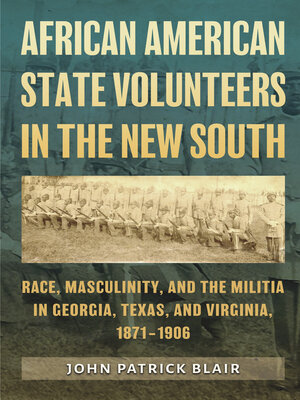African American State Volunteers in the New South
ebook ∣ Race, Masculinity, and the Militia in Georgia, Texas, and Virginia, 1871–1906 · Prairie View A&M University Series
By John Patrick Blair

Sign up to save your library
With an OverDrive account, you can save your favorite libraries for at-a-glance information about availability. Find out more about OverDrive accounts.
Find this title in Libby, the library reading app by OverDrive.



Search for a digital library with this title
Title found at these libraries:
| Library Name | Distance |
|---|---|
| Loading... |
In the immediate aftermath of the Civil War, a turbulent period fraught with violence, struggle, and uncertainty, a forgotten few African Americans banded together as men to assert their rights as citizens. Following emancipation, the nation's newest citizens established churches, entered the political arena, created educational and business opportunities, and even formed labor organizations, but it was through state militia service, with the prestige and heightened status conveyed by their affiliation, that they displayed their loyalty, discipline, and more importantly, their manliness within the public sphere.
In African American State Volunteers in the New South, John Patrick Blair offers a comparative examination of the experiences and activities of African American men as members in the state volunteer military organizations of Georgia, Texas, and Virginia, including the complicated relationships between state government and military officials—many of them former Confederate officers—and the leaders of the Black militia volunteers. This important new study expands understanding of racial accommodation, however minor, toward the African American military, confirmed not only in the actions of state government and military officials to arm, equip, and train these Black troops, but also in the acceptance of clearly visible and authorized military activities by these very same volunteers. In doing so, it adds significant layers to our knowledge of racial politics as they developed during Reconstruction, and prompts us to consider a broader understanding of the history of the South into the twentieth century.







